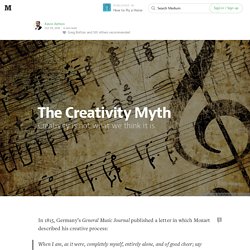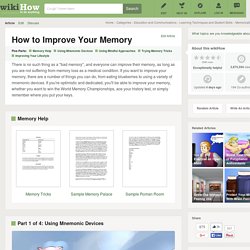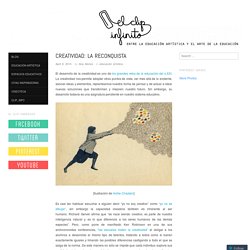

The Universal Mind of Bill Evans: Advice on Learning to Play Jazz & The Creative Process. Bill Evans was one of the greatest jazz pianists of the second half of the 20th century. His playing on Miles Davis’s landmark 1959 record, Kind of Blue, and as leader of the Bill Evans Trio was a major influence on players like Herbie Hancock, Keith Jarrett and Chick Corea.
“Bill’s value can’t be measured in any kind of terms,” Corea once said. “He’s one of the great, great artists of this century.” Evans’s approach to music was a process of analysis followed by intuition. He would study a problem deliberately, working on it over and over until the solution became second nature. Evans crafted his improvisations with exacting deliberation. Evans discusses his creative process in a fascinating 1966 documentary, The Universal Mind of Bill Evans. “It’s very important to remember,” Evans says, “that no matter how far I might diverge or find freedom in this format, it only is free insofar as it has reference to the strictness of the original form. Related content: Brain games - mindgames.com. How to Build a Memory Palace (with Sample) <img alt="Image titled Build a Memory Palace Step 1" src=" width="728" height="546" class="whcdn">1Edit step1Decide on a blueprint for your palace.

While a memory palace can be a purely imagined place, it is easier to base it upon a place that exists in the real world and that you are familiar with or you can use some places of your favorite video game. A basic palace could be your bedroom, for example. Explore the Brain and Mind - BrainFacts.org. The Creativity Myth — How to Fly a Horse. In 1815, Germany’s General Music Journal published a letter in which Mozart described his creative process: When I am, as it were, completely myself, entirely alone, and of good cheer; say traveling in a carriage, or walking after a good meal, or during the night when I cannot sleep; it is on such occasions that my ideas flow best and most abundantly.

Measuring Creativity for Innovation Management. Brain games - mindgames.com. Cómo reducir el estrés en la universidad. Uno de los indicadores más utilizados en el ámbito educativo para medir el estrés de los estudiantes es el conocido como burnout (quemado, en español).

Este método sirve para evaluar cómo afectan al rendimiento académico los planes de estudio, la acumulación excesiva de créditos, la competitividad entre compañeros o la ansiedad ante los exámenes. Los estudiantes de Ciencias Jurídicas y Económicas son los que más estrés sufren frente a los de Ciencias Humanas y Sociales que son los que muestran mejores niveles de bienestar, según un estudio elaborado en 2005 por el área de Psicología Social de la Universitat Jaume I de Castellón (UJI). Algunos centros universitarios se han propuesto acabar con el estrés usando antiguas técnicas de meditación.
Lo llaman Mindfulness (atención plena) y ahora mismo es la última tendencia en Harvard, Stanford o Georgetown donde se ofrecen cursos de esta disciplina a estudiantes, docentes o personal administrativo. How to Improve Your Memory (with Examples) Edit Article Five Parts:Memory HelpUsing Mnemonic DevicesUsing Mindful ApproachesTrying Memory TricksImproving Your Lifestyle There is no such thing as a "bad memory", and everyone can improve their memory, as long as you are not suffering from memory loss as a medical condition.

If you want to improve your memory, there are a number of things you can do, from eating blueberries to using a variety of mnemonic devices. If you're optimistic and dedicated, you'll be able to improve your memory, whether you want to win the World Memory Championships, ace your history test, or simply remember where you put your keys. Ad Steps Part 1 of 4: Using Mnemonic Devices. Cómo mejorar el funcionamiento del lado derecho de tu cerebro.
Test Your Creativity: 5 Classic Creative Challenges. Fascinated by how brains and creativity work, we frequently share new research on the 99U twitter feed, showing how everything from drinking alcohol, to taking vacations, to moving your eyes from side to side can make you more creative.

What’s particularly interesting, however, is that most of these studies rely on just a small group of core creativity tests – and you don’t need any special lab equipment to take them. Below, we’ve collected five of the most commonly used creativity challenges for your self-testing pleasure. While creativity “testing” is far from an exact science, trying your mettle at these challenges could yield insight into when, where, and how you’re most creative. Or maybe it’ll just be fun. 1. Developed by J.P.
Hold papers togetherCufflinksEarringsImitation mini-tromboneThing you use to push that emergency restart button on your routerKeeping headphones from getting tangled upBookmark The test measures divergent thinking across four sub-categories: 2. 3. 4. 5. Lemelson Center for the Study of Invention and Innovation. Creatividad: la reconquista. El desarrollo de la creatividad es uno de los grandes retos de la educación del s.XXI.

La creatividad nos permite adoptar otros puntos de vista, ver más allá de lo evidente, asociar ideas y elementos, replantearnos nuestra forma de pensar y de actuar e idear nuevas soluciones que transformen y mejoren nuestro futuro. Sin embargo, su desarrollo todavía es una asignatura pendiente en nuestro sistema educativo. [Ilustración de Hollie Chastain] Es casi tan habitual escuchar a alguien decir “yo no soy creativo” como “yo no se dibujar”, sin embargo la capacidad creadora también es inherente al ser humano.